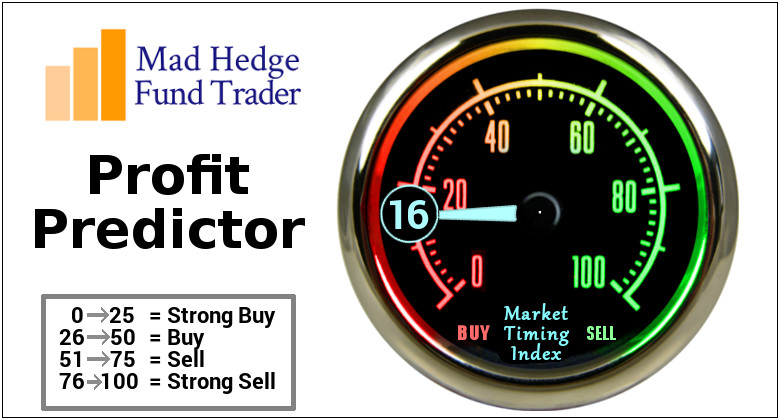When John identifies a strategic exit point, he will send you an alert with specific trade information as to what security to sell, when to sell it, and at what price. Most often, it will be to TAKE PROFITS, but, on rare occasions, it will be to exercise a STOP LOSS at a predetermined price to adhere to strict risk management discipline. Read more
When John identifies a strategic exit point, he will send you an alert with specific trade information as to what security to sell, when to sell it, and at what price. Most often, it will be to TAKE PROFITS, but, on rare occasions, it will be to exercise a STOP LOSS at a predetermined price to adhere to strict risk management discipline. Read more
Global Market Comments
February 9, 2018
Fiat Lux
Featured Trade:
(FEBRUARY 14 GLOBAL STRATEGY WEBINAR),
(SHORT SELLING SCHOOL 101),
(SH), (SDS), (PSQ), (DOG), (RWM), (SPXU), (AAPL),
(VIX), (VXX), (IPO), (MTUM), (SPHB), (HDGE)
Mad Hedge Technology Letter
February 9, 2018
Fiat Lux
Featured Trade:
(HANGING OUT WITH THE WOZ),
(AAPL)
With the stock market falling for the next few weeks, or even months, it's time to rehash how to profit from falling markets one more time.
There is nothing worse than closing the barn door after the horses have bolted.
No doubt, you will receive a wealth of short selling and hedging ideas from your other research sources and the media at the next market bottom. That is always how it seems to play out.
So I am going to get you out ahead of the curve, putting you through a refresher course on how to best trade falling markets now.
Market's could be down 10% by the time this is all over.
THAT IS MY LINE IN THE SAND!
There is nothing worse than fumbling around in the dark looking for the matches after a storm has knocked the power out.
I'm not saying that you should sell short the market right here. But there will come a time when you will need to do so. Watch my Trade Alerts for the best market timing. So here are the best ways to profit from declining stock prices, broken down by security type:
Bear ETFs
Of course the granddaddy of them all is the ProShares Short S&P 500 Fund (SH), a non leveraged bear ETF that is supposed to match the fall in the S&P 500 point for point on the downside. Hence, a 10% decline in the (SPY) is supposed to generate a 10% gain the in the (SH).
In actual practice, it doesn't work out like that. The ETF has to pay management operating fees and expenses, which can be substantial. After all, nobody works for free.
There is also the "cost of carry," whereby owners have to pay the price for borrowing and selling short shares. They are also liable for paying the quarterly dividends for the shares they have borrowed, around 2% a year. And then you have to pay the commissions and spread for buying the ETF.
Still individuals can protect themselves from downside exposure in their core portfolios through buying the (SH) against it (click here for the prospectus). Short selling is not cheap. But it's better than watching your gains of the last seven years go up in smoke.
Virtually all equity indexes now have bear ETF's. Some of the favorites include the (PSQ), a short Play on the NASDAQ (click here for the prospectus), and the (DOG), which profits from a plunging Dow Average (click here for the prospectus).
My favorite is the (RWM) a short play on the Russell 2000, which falls 1.5X faster than the big cap indexes in bear markets (click here for the prospectus).
Leveraged Bear ETFs
My favorite is the ProShares Ultra Short S&P 500 (SDS), a 2X leveraged ETF (click here for the prospectus). A 10% decline in the (SPY) generates a 20% profit, maybe.
Keep in mind that by shorting double the market, you are liable for double the cost of shorting, which can total 5% a year or more. This shows up over time in the tracking error against the underlying index. Therefore, you should date, not marry, this ETF or you might be disappointed.
3X Leveraged Bear ETFs
The 3X bear ETFs, like the UltraPro Short S&P 500 (SPXU), are to be avoided like the plague (click here for the prospectus).
First, you have to be pretty good to cover the 8% cost of carry embedded in this fund. They also reset the amount of index they are short at the end of each day, creating an enormous tracking error.
Eventually, they all go to zero, and have to be periodically redenominated to keep from doing so. Dealing spreads can be very wide, further added to costs.
Yes, I know the charts can be tempting. Leave these for the professional hedge fund intra day traders they are meant for.
Buying Put Options
For a small amount of capital, you can buy a ton of downside protection. For example, the April (SPY) $182 puts I bought for $4,872 allowed me to sell short $145,600 worth of large cap stocks at $182 (8 X 100 X $6.09).
Go for distant maturities out several months to minimize time decay and damp down daily price volatility. Your market timing better be good with these, because when the market goes against you, put options can go poof, and disappear pretty quickly.
That's why you read this newsletter.
Selling Call Options
One of the lowest risk ways to coin it in a market heading south is to engage in "buy writes." This involves selling short call options against stock you already own, but may not want to sell for tax or other reasons.
If the market goes sideways, or falls, and the options expire worthless, then the average cost of your shares is effectively lowered. If the shares rise substantially they get called away, but at a higher price, so you make more money. Then you just buy them back on the next dip. It is a win-win-win.
I'll give you a concrete example. Let's say you own 100 shares of Apple (AAPL), which closed on Friday at $95.13, worth $9,513. If you sell short 1 July, 2016 $100 call at $1.30 against them, you take in $130 in premium income ($1.30 X 100 because one call option contract is exercisable into 100 shares).
If Apple closes below $100 on the July 15, 2016 expiration date, the options expire worthless and you keep your stock and the premium. You are then free to repeat the strategy for the following month. If (AAPL) closes anywhere above $100 and your shares get called away, you still make money on the trade.
Selling Futures
This is what the pros do, as futures contracts trade on countless exchanges around the world for every conceivable stock index or commodity. It is easy to hedge out all of the risk for an entire portfolio of shares by simply selling short futures contracts for a stock index.
For example, let's say you have a portfolio of predominantly large cap stocks worth $100,000. If you sell short 1 June, 2016 contract for the S&P 500 against it, you will eliminate most of the potential losses for your portfolio in a falling market.
The margin requirement for one contract is only $5,000. However if you are short the futures and the market rises, then you have a big problem, and the losses can prove ruinous.
But most individuals are not set up to trade futures. The educational, financial, and disclosure requirements are beyond mom and pop investing for their retirement fund.
Most 401ks and IRAs don't permit the inclusion of futures contracts. Only 25% of the readers of this letter trade the futures market. Regulators do whatever they can to keep the uninitiated and untrained away from this instrument.
That said, get the futures markets right, and it is the quickest way to make a fortune, if your market direction is correct.
Buying Volatility
Volatility (VIX) is a mathematical construct derived from how much the S&P 500 moves over the next 30 days. You can gain exposure to it through buying the iPath S&P 500 VIX Short Term Futures ETN (VXX), or buying call and put options on the (VIX) itself.
If markets fall, volatility rises, and if markets rise, then volatility falls. You can therefore protect a stock portfolio from losses through buying the (VIX).
I have written endlessly about the (VIX) and its implications over the years. For my latest in-depth piece with all the bells and whistles, please read Buy Flood Insurance With the (VXX)by clicking here.
Selling Short IPO's
Another way to make money in a down market is to sell short recent initial public offerings. These tend to go down much faster than the main market. That's because many are held by hot hands, known as "flippers", and don't have a broad institutional shareholder base.
Many of the recent ones don't make money and are based on an, as yet, unproven business model. These are the ones that take the biggest hits.
Individual IPO stocks can be tough to follow to sell short. But one ETF has done the heavy lifting for you. This is the Renaissance IPO ETF (click here for the prospectus).
Buying Momentum
This is another mathematical creation based on the number of rising days over falling days. Rising markets bring increasing momentum, while falling markets produce falling momentum.
So selling short momentum produces additional protection during the early stages of a bear market. Blackrock has issued a tailor made ETF to capture just this kind of move through its iShares MSCI Momentum Factor ETF (MTUM). To learn more, please read the prospectus by clicking here.
Buying Beta
Beta, or the magnitude of share price movements, also declines in down markets. So selling short beta provides yet another form of indirect insurance. The PowerShares S&P 500 High Beta Portfolio ETF (SPHB) is another niche product that captures this relationship.
The Index is compiled, maintained and calculated by Standard & Poor's and consists of the 100 stocks from the (SPX) with the highest sensitivity to market movements, or beta, over the past 12 months.
The Fund and the Index are rebalanced and reconstituted quarterly in February, May, August and November. To learn more, read the prospectus by clicking here.
Buying Bearish Hedge Funds
Another subsector that does well in plunging markets are publicly listed bearish hedge funds. There are a couple of these that are publicly listed and have already started to move.
One is the Advisor Shares Active Bear ETF (HDGE) (click here for the prospectus). Keep in mind that this is an actively managed fund, not an index or mathematical relationship, so the volatility could be large.
 Oops, Forgot to Hedge
Oops, Forgot to Hedge
When John identifies a strategic exit point, he will send you an alert with specific trade information as to what security to sell, when to sell it, and at what price. Most often, it will be to TAKE PROFITS, but, on rare occasions, it will be to exercise a STOP LOSS at a predetermined price to adhere to strict risk management discipline. Read more
When John identifies a strategic exit point, he will send you an alert with specific trade information as to what security to sell, when to sell it, and at what price. Most often, it will be to TAKE PROFITS, but, on rare occasions, it will be to exercise a STOP LOSS at a predetermined price to adhere to strict risk management discipline. Read more
Global Market Comments
February 8, 2018
Fiat Lux
Featured Trade:
(MAD HEDGE MARKET TIMING INDEX SHOWING "EXTREME BUY"),
(SPY), (TLT), (VIX)
(A NOTE ON OPTIONS CALLED AWAY),
(AAPL), (TLT)

I found a new great way to predict the stock market. Launch a new technology research and trade mentoring newsletter and it will crash within days. It works 100% of the time.
It is often said that that the stock market has discounted 11 out of the last five recessions.
This is one of those times that the stock market has discounted a recession that isn't going to happen, not for at least two years anyway.
With my Mad Hedge Market Timing Index at a very rare "Extreme Buy" reading of 18, I have to buy stocks here or shoot myself in the head.
Not only is the index shouting out its strongest "BUY" signal in three years, all 30 of the data inputs are individually at the lowest levels in three years, or in nine years!
I believe the bottom in the stock market is in.
We may see continued high volatility. May see a terrifying marginal new low. We may see the Mad Hedge Market Timing Index bounce around here in the teens for a couple of weeks.
But for grizzled veterans like me it is now time to back up the truck and load up on the high-quality names which are on sale. The risk/reward of adding new positions here is overwhelmingly in favor of RISK.
It's "RISK ON" baby.
This is why I stopped out of my gold (GLD) long position with a small loss with only seven trading days to go. There is no need for a hedge in a rising market. Watching gold's price action today, other traders obviously feel the same way as me.
If you CAN'T bring yourself to hoover up stocks here, you better get out of the business.
Let me give you a few reasons why.
The short volatility industry is now completely gone. It disappeared in a few frantic hours on Monday night, leaving investors with some $8 billion in losses.
Never again will we see (VIX) short covering on such a massive scale, which then feeds into the stock market, triggering these massive 1,000 point air pockets we saw (more pilot talk here).
Not only that, all of the hot money is out of the market as well, stopped out when shares cratered. There is now a ton of money looking to get back in.
We also still have three more months of seasonal strength for shares, which usually ends in May.
Finally, the economy is getting stronger, not weaker. The last two weeks have been similar to 1987, when the Dow Average collapsed by 22% in a single day, but the economy just kept blithely powering on.
Those who held on in October, 1987, as I did, made back all their losses by the end of the year.
Even though the "BUY" signals are among the highest I have ever seen, I am still remaining my usually cautious, circumspect self.
As they teach you at the Marine Corps Flight School in Pensacola, "There are old pilots, and there are bold pilots, but there are no old, bold pilots."
All of my options spreads I am adding here will remain at their maximum potential profit point, even if the underlying shares fall another 10%-20%. You have to allow them room to breathe.
Keep in mind that I am taking a "Tiffany's approach to investment here. All of these companies I have been sending Trade Alerts on I have either been covering for 45 years, or with the tech names, since they were founded in the seventies, eighties, nineties, or 2000's.
In other words, I know them extremely well. You are only getting the best of the best.
So load the boat, fill your boots, and go pedal to the metal. If these stocks go wrong, they can always move in with you.

An Old Pilot
Legal Disclaimer
There is a very high degree of risk involved in trading. Past results are not indicative of future returns. MadHedgeFundTrader.com and all individuals affiliated with this site assume no responsibilities for your trading and investment results. The indicators, strategies, columns, articles and all other features are for educational purposes only and should not be construed as investment advice. Information for futures trading observations are obtained from sources believed to be reliable, but we do not warrant its completeness or accuracy, or warrant any results from the use of the information. Your use of the trading observations is entirely at your own risk and it is your sole responsibility to evaluate the accuracy, completeness and usefulness of the information. You must assess the risk of any trade with your broker and make your own independent decisions regarding any securities mentioned herein. Affiliates of MadHedgeFundTrader.com may have a position or effect transactions in the securities described herein (or options thereon) and/or otherwise employ trading strategies that may be consistent or inconsistent with the provided strategies.

















